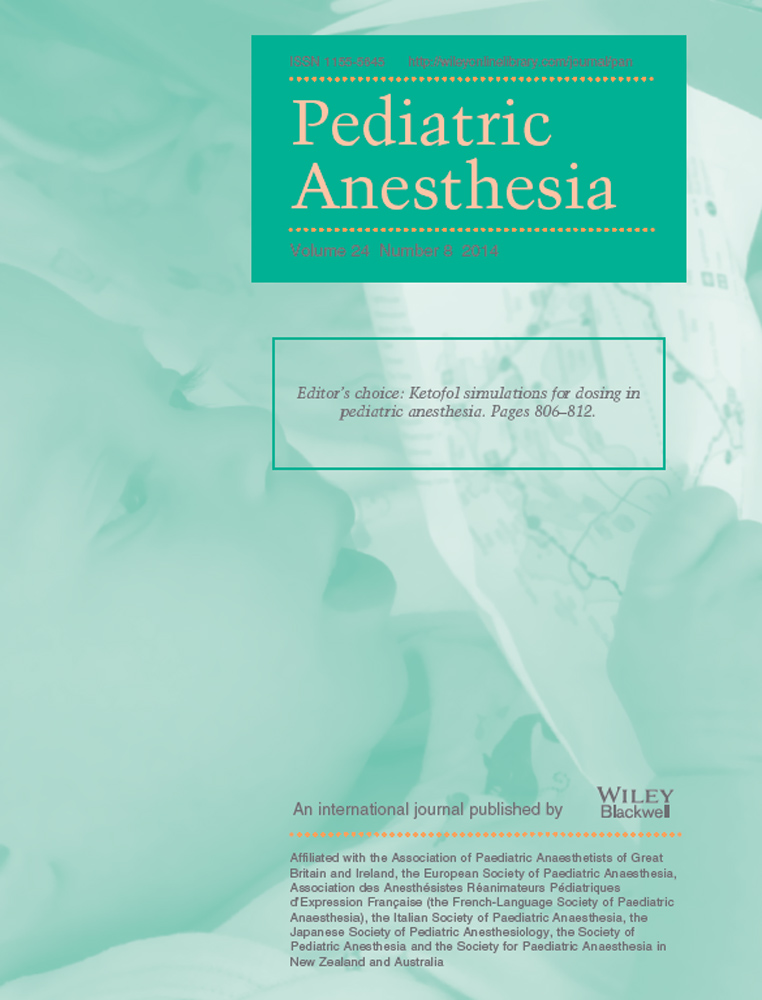Comparison of propofol and dexmedetomedine techniques in children undergoing magnetic resonance imaging
Summary
Background
Propofol (PRO) and dexmedetomidine (DEX) are commonly used to produce anesthesia and sedation for routine MRI procedures. Children with complex conditions often require much lengthy MRI for multi-body-part scans with frequent scanner coil changes and patient body reposition. This study compared PRO and DEX techniques on outcomes for the particular MRI setting with longer than 1 h duration.
Methods
95 children, aged from 1 to 7 years, scheduled for MRI >75 min were randomly assigned to PRO or DEX group. After induced with sevoflurane, a loading dose of PRO (2 mg·kg−1) was administrated and followed by continuous infusion (200 μg·kg−1·min−1); a loading dose of DEX (2 μg·kg−1) was administrated and followed by continuous infusion (2 μg·kg−1·h−1). Patients received O2 by nasal cannula. The observed outcomes were times for induction, MRI, emergence, and recovery, and total time (induction to discharge); MRI pauses from patient movement; incidence of technique failure and critical events; emergence and behavior in postanesthesia care unit (PACU); parental satisfaction; and arterial pressure (BP) and heart rate (HR) during anesthesia.
Results
PRO compared with DEX showed significantly less time for anesthesia induction (16.3 versus 24.2 min), emergence (21.2 versus 39.9 min), PACU (35.7 versus 62.5 min), and total time (135 versus 173 min) (all P < 0.001). There were significantly fewer pauses during MRI and lower failure rate to complete MRI in PRO versus DEX (0.22 versus 0.81, P = 0.01 and 1 versus 15, P < 0.001), less behavioral disturbances in PACU, and higher parental satisfaction in PRO versus DEX (P < 0.01). There were no critical events in either group: In PRO, mean BP during MRI (from 52 ± 8 to 58 ± mmHg) was significantly less than before anesthesia (80 ± 12 mmHg), while HR remained relatively constant (range of 97–103) at its baseline of 108 ± 21, but in DEX, mean BP remained unchanged (from 76 ± 12 to 78 ± 15) during anesthesia compared with before anesthesia (79 ± 14 mmHg), while HR decreased (74 ± 16 to 78 ± 15) during anesthesia from its baseline (102 ± 17) .
Conclusion
For children undergoing lengthy multicomponent MRI, the propofol technique yielded overall better outcomes than the dexmedetomedine technique in terms of timeliness, PACU emergence characteristics, and parental satisfaction.




